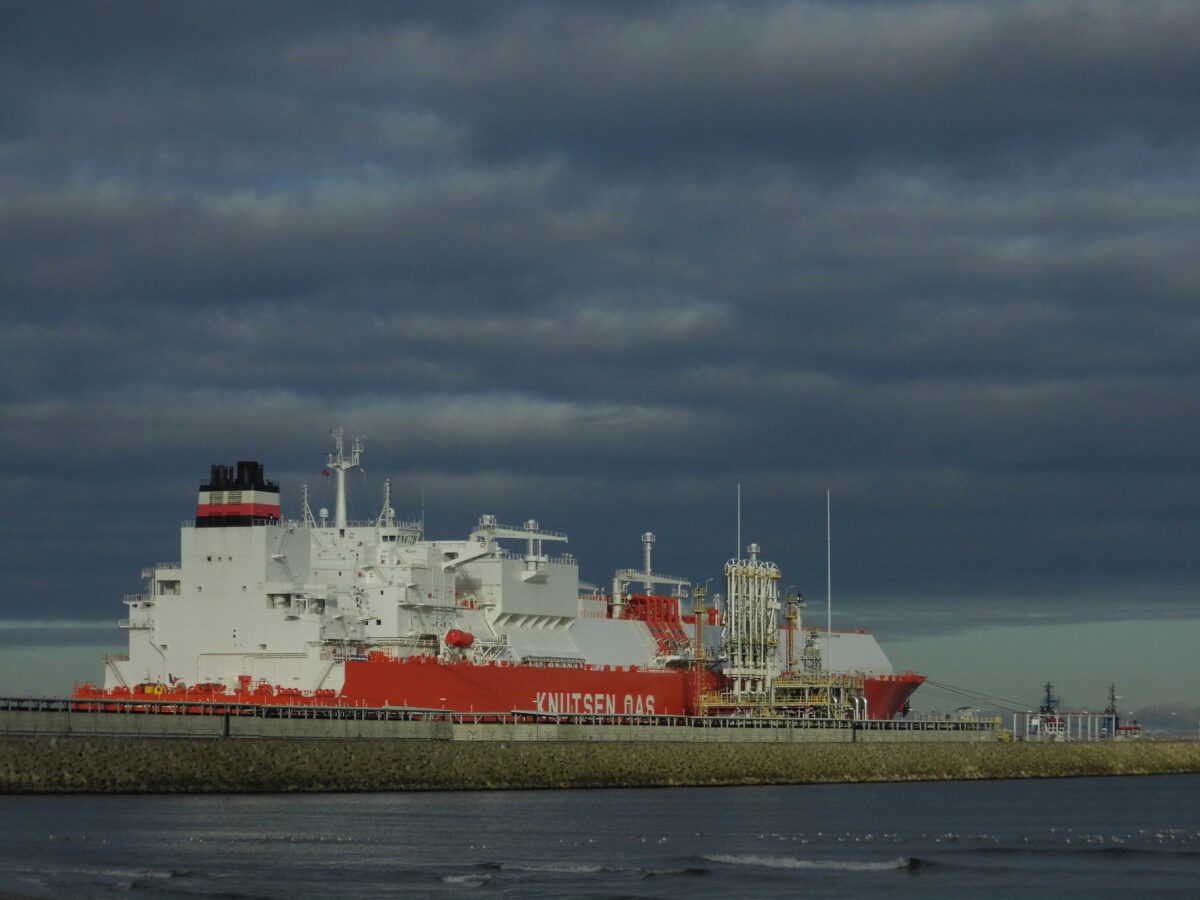Information about CO2 emissions in 2024 is for the most part as invisible as the gas itself. When Europe decided to import American LNG (Liquified Natural Gas), nobody asked about the impact on emissions. It turns out this was a bad move for the climate.
The root of the problem is that using US LNG in Europe leads to significant extra CO2 and methane (natural gas) emissions during the whole process of transporting and liquefying and keeping it liquefied. Methane is far worse than CO2 when it comes to global warming – 80 times worse, in fact, when considered over a 20-year period – it then dissipates, which is better in the very long term.
If there was absolutely no methane leakage, burning a tonne of methane would result in the release of 2.75 tonnes of CO2. It’s normal to quote the greenhouse gas impact on global warming in terms of CO2 equivalent, or CO2e. This refers to how much global warming any greenhouse gas would cause, quoted in a standard unit based on the global warming that CO2 causes. So a tonne of methane when burnt causes 2.75 tonnes of CO2e. If it was disastrously released without burning, the raw methane in the atmosphere would cause 80 tonnes of CO2e.
Prof. Robert Howarth, a member of the New York State Climate Action Council, released a cradle-to-grave emissions analysis of US LNG gas use in export markets and published the results in September 2024. The analysis totals up the pollution from:
- methane leakage and CO2 pollution from energy use during fracking, where most of the US natural gas comes from
- CO2 from energy use to liquify the gas for export as well as methane leakage in the process
- methane release from poor fuel combustion in the LNG tankers used for export, as well as the CO2 from the combustion
- CO2 from energy use to keep the LNG liquid and to regasify it on arrival in Europe and methane leakage during regasification and the resulting transport via pipeline
The results show that usage of US LNG in Europe is 33% more climate-damaging than coal. This flies in the face of naive assumptions that natural gas is “clean”. The only remaining claim to being clean is that little particulate pollution is caused, as for coal, which would seriously affect children. In effect, LNG is worse than coal.
Clarity for LNG under Carbon Accounts
Under the carbon accounts framework, everybody pays carbon tokens for purchases on everything, creating a trail of carbon tokens leading back to the fossil fuel companies who must pay their government in carbon tokens on a pro rata basis dependent on the amount of fossil fuels they extract. So the consumer always pays for the CO2e, as well as the cash value – this is key to the framework’s innovation, fairness and transparency.
To see what impact this would have in the LNG situation, we should consider what happens to the carbon token price of the fuel as it progresses along the supply chain.
- Shale gas extraction (fracking): this releases 0.8kg CO2 per kilo of methane. Pure methane when burnt causes 2.7kg of CO2, so shale gas increases the cost to 3.5kg in tokens.
- Liquefaction into the tanker results in 0.3kg CO2 per kilo with gas-fired energy. This bumps the carbon price up from 3.5 to 3.8kg CO2 per kilo of LNG.
- An average 38-day round trip for an LNG tanker causes 0.3kg CO2 per kilo from the ship’s engines. This takes up the carbon price to 4.1kg CO2 per kilo.
So the carbon price of LNG jumps by 50% from 2.7kg per kilo to 4.1kg. This would be payable in carbon tokens by the consumer under the carbon accounts framework, at the point of purchase. Assuming the consumer has a choice including renewables with a carbon price probably around zero, the question is almost rhetorical: is this clear enough, even to politicians scrambling to find a replacement for Russian natural gas imports?
This carbon price does not include what would be payable due to the impact of methane emissions from the escaped, leaked, vented or otherwise unburnt methane. There are ways to include this in the carbon accounts framework, and it would result in an even starker token price difference. It would make the poor use of fossil fuels obviously impractical because someone would have to pay for it in tokens at each step in the process.
More Resources
Prof. Howarth’s analysis:
Howarth R.W.: The greenhouse gas footprint of liquefied natural gas (LNG) exported from the United States. Energy Sci Eng. 2024; 1-17 (2024)
See also Gas: More Efficient than Coal but not a Transition Fuel
Push-back from LNG advocates (apparently Appalachia coal has a much greater methane off-gasing problem comparatively, and is the source of much EU coal): https://www.woodmac.com/press-releases/us-lng-full-lifecycle-emissions-delivered-to-europe-are-48-of-the-coal-equivalent/


